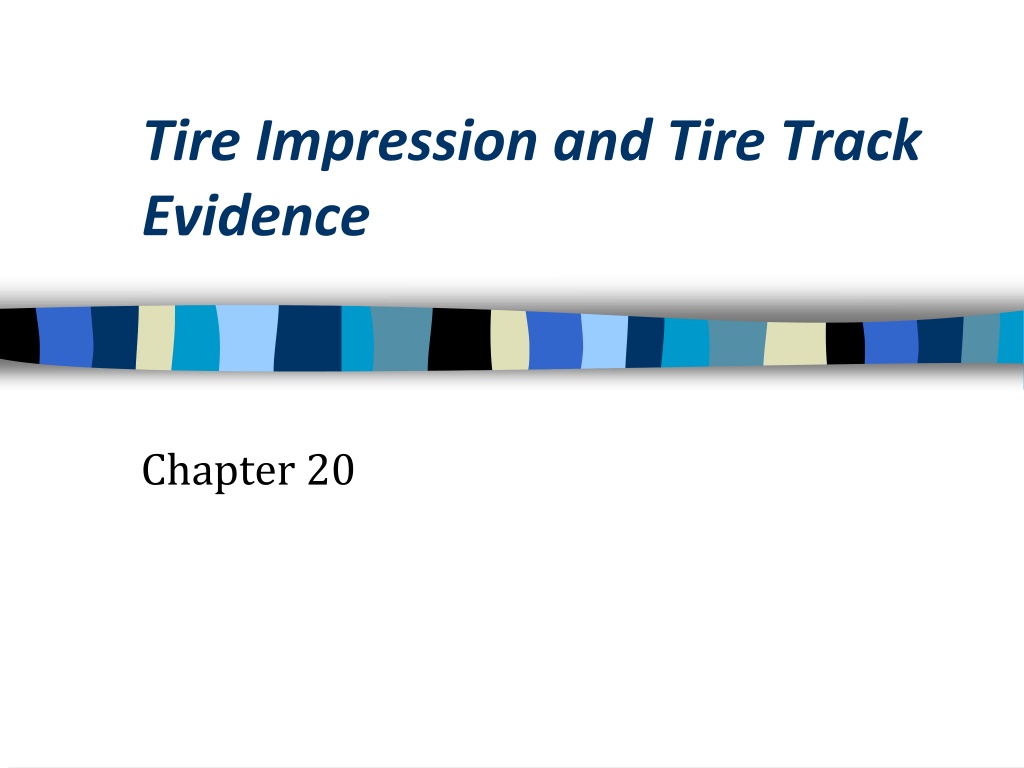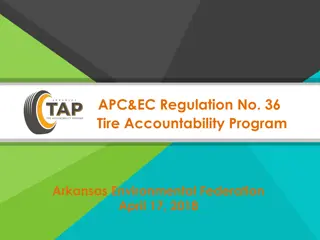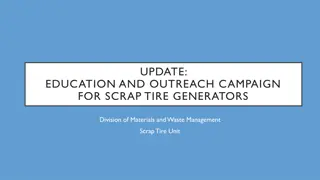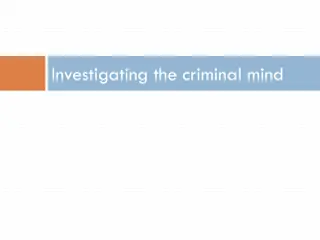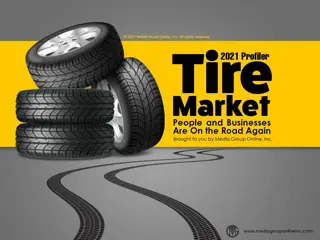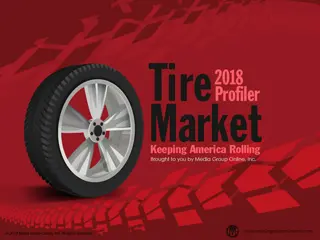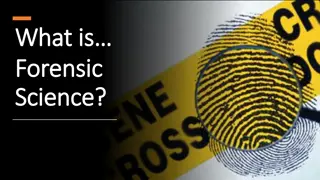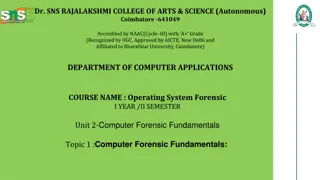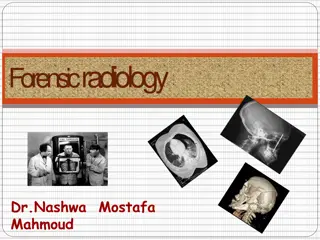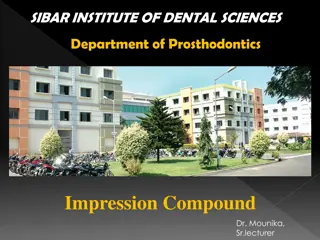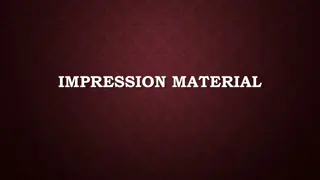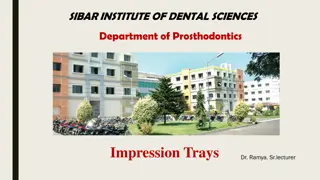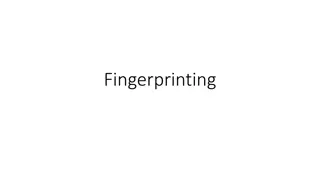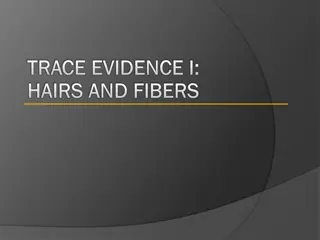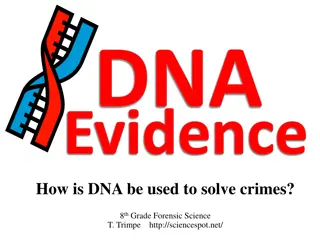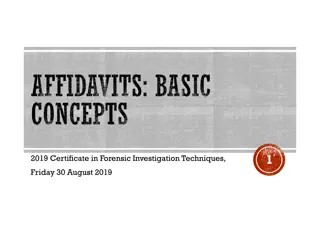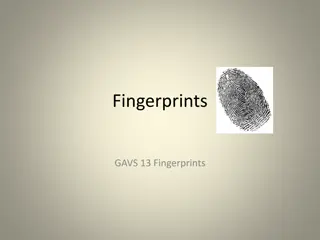Understanding Tire Impression and Track Evidence in Forensic Investigations
Tire impression and track evidence play a crucial role in forensic investigations to link suspect vehicles to crime scenes and reconstruct events. This type of evidence helps in identifying tire dimensions, tread designs, and tire characteristics. Background information on tires, tire construction, tread components, and sidewall details are essential in analyzing tire evidence effectively.
Download Presentation

Please find below an Image/Link to download the presentation.
The content on the website is provided AS IS for your information and personal use only. It may not be sold, licensed, or shared on other websites without obtaining consent from the author. Download presentation by click this link. If you encounter any issues during the download, it is possible that the publisher has removed the file from their server.
E N D
Presentation Transcript
Tire Impression and Tire Track Evidence Chapter 20
Tire Track Impressions on a Road Surface., Dept. Public Safety of Alaska I. Overview: What is a tire impression? = 2 or 3-D marks that reflect the tread design and dimensional features of tires What is a tire track? = the relative dimensions between two or more tires of a vehicle http://www.suite101.com/view_image.cfm/454216 http://www.tire-information-world.com/image-files/tire-tracks-in-snow.jpg
Why do we care about this type of evidence? To help prove a suspect vehicle was present at the crime scene and to reconstruct events/lead to other evidence
II. Background info on tires Tires come in thousands of designs and numerous sizes. Tires on new vehicles are known as original equipment (OE) tires. Importance = the same make and model vehicles will have the same tire size and brand Tires purchased to replace worn down or damaged tires are called replacement tires. Importance = replacement tires are usually not the same design as OE . . . so a vehicle with 3 or 4 replacement tires, each of different design, sets up a unique situation
Tire construction: Tires are made of various compounds of rubber, steel, and fabric. The tire is constructed without any design first (green tire). Then placed in a mold where tread and sidewall designs are added. Green tire http://www.sincerelysustainable.com/wp-content/uploads/2009/07/espec.jpg http://images.motorcyclecruiser.com/tech/tirez-cutaway-md.jpg
III. Tire tread and sidewall components: Tread design components can be associated with a brand name and manufacturer Sketch figure 19.3 in textbook on page 379. Be sure to indicate the following points: centerline, rib, groove, slot, design element, sipe, and tread wear indicator http://www.centralia.edu/academics/forensicscience/FORS%20101/PowerPointPres/LTire.ppt
Sidewall components label side (face outward) serial side (face inward) Information important to investigators Tire brand and style name (both sides) Ex. Michelin XM+S 244 Tire size (both sides) Ex. P195 75/R15 Department of Transportation (DOT) Number (serial side) Begins with DOT Next = symbols for manufacturer and plant code (where made) Next = 3 or 4 numbers that represent week and year tire manufactured (ex. 4901 = 49th week of 2001) NOTE: some tires are retread. These tires will have a DOTR number. http://images.m otorcyclecruiser.c om/tech/tirez- cutaway-md.jpg
IV. Noise Treatment As tires rotate the design elements vibrate and produce noise. If all elements were the same size (which relates to pitch), the noise would be very loud. Noise treatment = tire industry creating tire designs that vary the size of the design elements around the tire. Images: http://www.centralia.edu/academics/forensicscience/FORS%20101/PowerPointPres/LTire.ppt
V. Tread wear indicators: Wear bars indicate when tire should be replaced Importance in forensics = can be retained in 3-D impressions Image: http://gallery.rennlist.com/albums/HRE-843-Yok-AVS/tire_wear_bar_front_1.jpg
VI. Tire Track Evidence: Includes tire track width, wheelbase dimensions, and turning diameter Tire track width = measurement made from center of one wheel or impression to center of the opposite (NOTE: many vehicles can share the same) Images: http://www.centralia.edu/academics/forensicscience/FORS%20101/PowerPointPres/LTire.ppt
Wheelbase dimensions = the measurement between the centers of the hubs of the front wheels to the center of the hubs of the rear wheels (NOTE: rarely is enough info detail retained at scene to determine this measurement) Images: http://www.centralia.edu/academics/forensicscience/FORS%20101/PowerPointPres/LTire.ppt
Turning diameter =diameter of the circle a vehicle makes when steering wheel is fully turned. (NOTE: can only be used to eliminate vehicles that cannot turn at least that sharply) Images: http://www.centralia.edu/academics/forensicscience/FORS%20101/PowerPointPres/LTire.ppt
VII. Recovery of Tire Evidence: First = general crime scene photographs (lots from many angles), and notes (number of tracks, relationship to one another, direction of travel) Then = examination quality photograph . . . this is done in same manner as footwear evidence EXCEPT for longer tire impressions . . . longer impressions taken as sequentially overlapping photos. (NOTE: all photos should be taken with ruler or other size reference device placed next to, NEVER within, the impression)
Then = casting . . any impression 4 ft or smaller should always be cast . . . often, cast offers best physical evidence for later comparison with a tire Images: http://www.centralia.edu/academics/forensicscience/FORS%20101/PowerPointPres/LTire.ppt
VIII. Tire Evidence Examination: First the treads will be compared with . . . Known tires Suspect vehicles . . .seize tires from vehicle, noting position on car Elimination vehicles (vehicles known to have been at the scene, i.e. police car) . . . a picture of tire is usually all that is needed ***tire design most useful to rule out tires Then if similar design . . . the tires must be analyzed further to make a match. To do so, will need to make a test impression with suspect tire(s) . . . usually done on clear material so can be superimposed on impression from scene.
Analysis includes: Closer look at tread design elements, grooves, and sipes Tread dimension and track characteristics (NOTE: Tread Design Guide and Who Makes it and Where lists issued yearly as reference material as well as a database to store wheelbase, track width, and turning radius can help create lists of possible vehicles) Noise treatment and wear features useful to significantly narrow down the possible number of tires. Also, wear bars and noise treatment can be used in combination to locate or eliminate the areas of the tire that have made the scene impression. Random individual characteristics or distinguishable marks includes stones, glass, nails, cuts and if present on both impression and suspect tire, this can allow for positive ID Multiple tires of different designs when found on one vehicle, the likelihood of finding another vehicle with the same combination of tire designs is small or nonexistent.
Go to Discovery Streaming video: Forensic Detectives: Mysteries and Solutions. (2004) View the following two clips only: 1-Examining Tire Tread Prints [02:51] 2-Tire Identification [02:07] Go to Discovery Streaming video: Forensic Detectives: Mysteries and Solutions. (2004) View the following two clips only: 1-Examining Tire Tread Prints [02:51] 2-Tire Identification [02:07]
